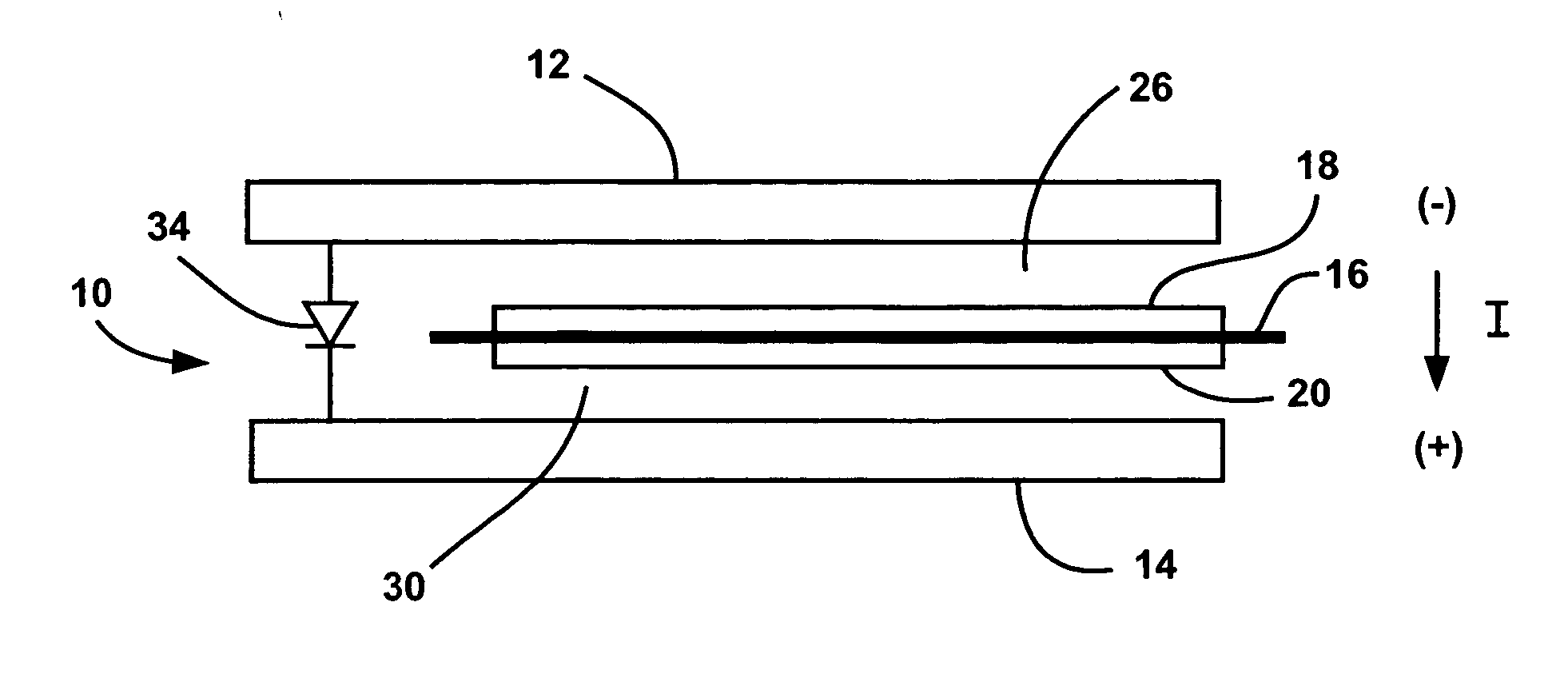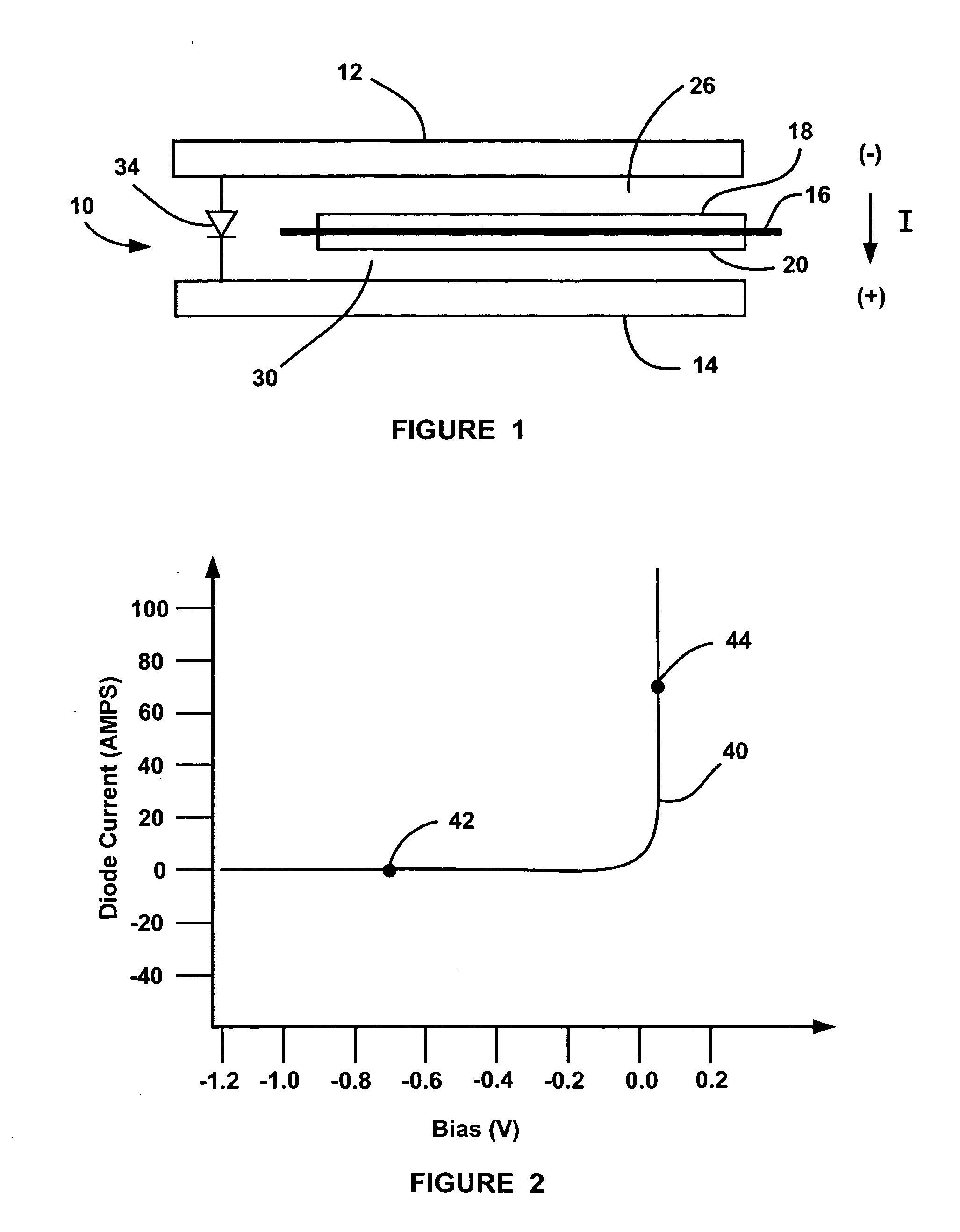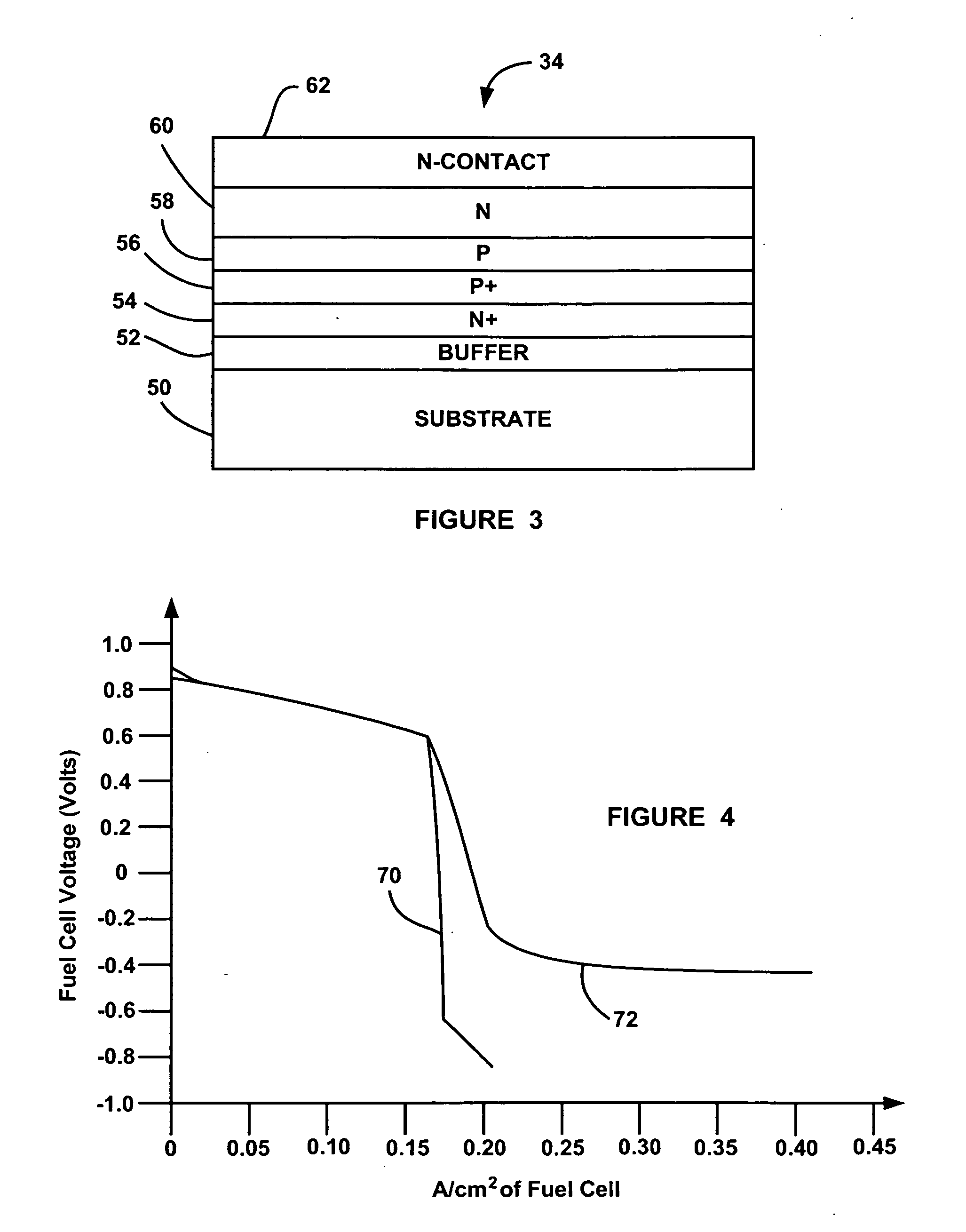Integration of an electrical diode within a fuel cell
a fuel cell and diode technology, applied in the field of fuel cells, can solve the problems of low-performing cells experiencing cell overload, and cell overload, and achieve the effect of not increasing the thickness of the overall stack
- Summary
- Abstract
- Description
- Claims
- Application Information
AI Technical Summary
Benefits of technology
Problems solved by technology
Method used
Image
Examples
Embodiment Construction
[0021] The following discussion of the embodiments of the invention directed to a fuel cell employing a diode for preventing fuel cell polarity reversal is merely exemplary in nature and is in no way intended to limit the invention or its applications or uses.
[0022]FIG. 1 is a cross-sectional view of a fuel cell 10 that would be one fuel cell of a fuel cell stack, for example, a fuel cell stack in a vehicle. The fuel cell 10 includes an anode-side bipolar plate 12 and a cathode-side bipolar plate 14 having an MEA 16 positioned therebetween. The MEA 16 includes a membrane on which a catalyst is deposited so that a catalyst layer of the MEA 16 faces both of the bipolar plates 12 and 14. In this example, an anode side of the bipolar plate 12 faces the MEA 16 and a cathode side of the bipolar plate 14 faces the MEA 16. The cathode side of the bipolar plate 12 would face the MEA of another fuel cell in the stack on one side of the fuel cell 10 and the anode side of the bipolar plate 14 ...
PUM
 Login to View More
Login to View More Abstract
Description
Claims
Application Information
 Login to View More
Login to View More - R&D
- Intellectual Property
- Life Sciences
- Materials
- Tech Scout
- Unparalleled Data Quality
- Higher Quality Content
- 60% Fewer Hallucinations
Browse by: Latest US Patents, China's latest patents, Technical Efficacy Thesaurus, Application Domain, Technology Topic, Popular Technical Reports.
© 2025 PatSnap. All rights reserved.Legal|Privacy policy|Modern Slavery Act Transparency Statement|Sitemap|About US| Contact US: help@patsnap.com



